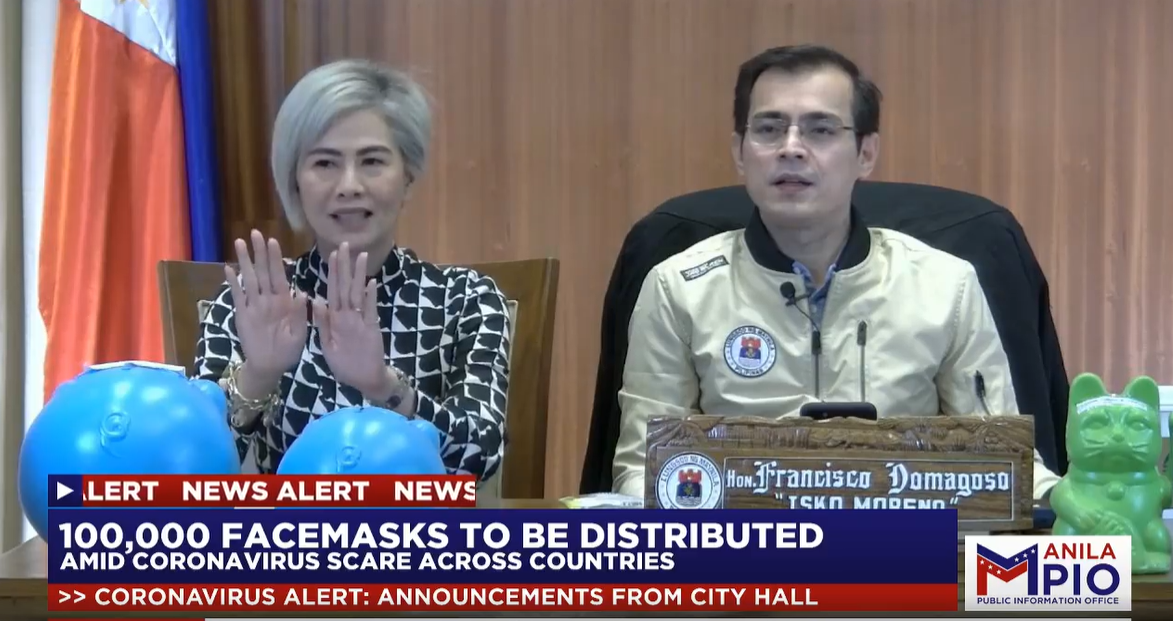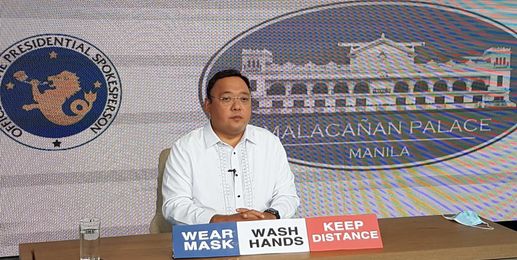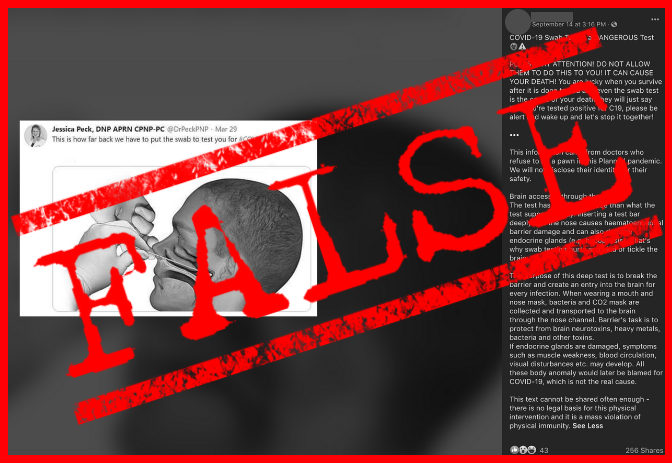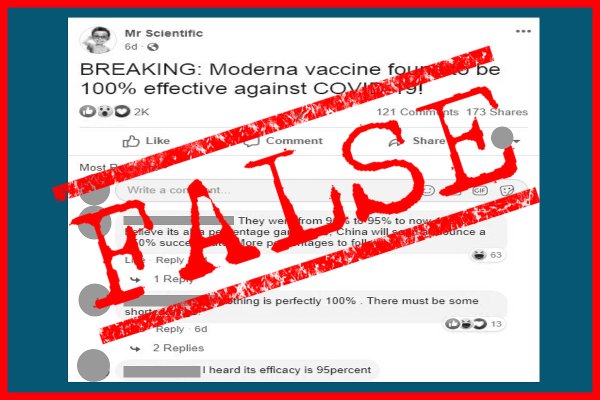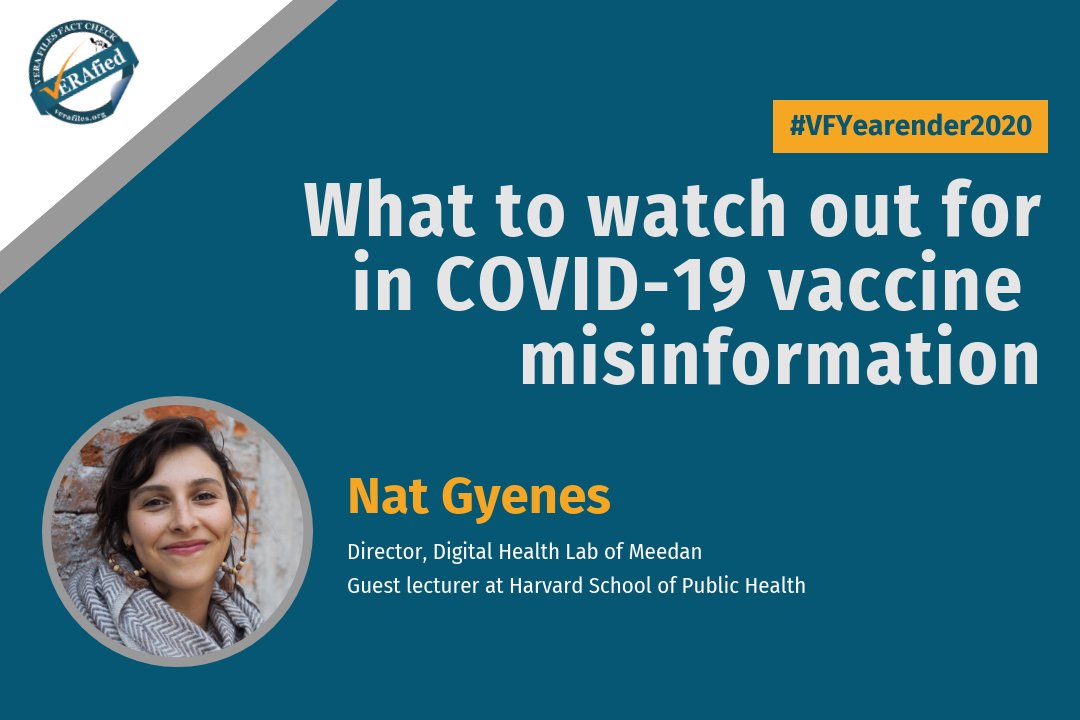Manila Vice Mayor Sheilah “Honey” Lacuna-Pangan, a former physician at the Manila Health Office, is wrong in saying the correct way of wearing a surgical mask depends on whether one is sick or wants to be protected against germs or virus.
STATEMENT
In a now-deleted video, originally posted on the Facebook page of Manila’s Public Information Office on Jan. 23, Lacuna demonstrated how to wear a face mask, which the office of the city mayor was distributing.
A netizen screen-recorded and posted the video on Youtube, including the portion where Lacuna said:
“’Yung tama hong paggamit nung ordinaryong face mask, ‘di ba kung nakikita po niyo ‘yung ordinaryong face masks, mayroon pong blue at saka may white po… Kapag tayo po ang may sakit, ‘yung white po nasa loob, kasi ‘yung white po ‘yung nagpe-prevent o humaharang po sa bacteria. In other words, para hindi po tayo makahawa, dapat po ‘yung white ang nasa loob, ‘yung blue ang nasa harap.
(The proper way to use the ordinary face mask: When you see an ordinary face mask, there’s the blue side and the white side. If we’re sick, [we should wear the mask with] the white part on the inside because the white side prevents or blocks the bacteria. In other words, we can prevent the spread of sickness; the white part should be inside while the blue should be outside).”
Lacuna added:
“Ngayon, kung ayaw naman po natin mahawa tayo, o tayo ‘yung mahawahan, ‘yung white po ang nasa labas (Now, if we don’t want to get infected, the white part should be worn on the outside).”
Source: Trending ni Andres Youtube account, Live Update Corona Virus Alert from Isko Moreno, Jan. 23, 2020
Seated beside her was Manila Mayor Francisco “Isko Moreno” Domagoso, who said he had just recently learned the “proper” way of wearing a face mask from Lacuna.
FACT
The World Health Organization (WHO), the Philippine Red Cross (PRC), the Department of Health (DOH), San Francisco’s Department of Public Health: Disease Prevention and Control, and the Hong Kong government are all one in saying there is only one way to wear surgical masks.
WHO Collaborating Center for Infectious Disease Epidemiology and Control Director Seto Wing Hong of Hong Kong University said in a Jan. 24 Bloomberg interview that the right way to wear surgical mask is to have the blue color on the outside and the white on the inside.
Wing Hong explained that the blue or colored side of the mask is waterproof, while the white side is absorbent:
“You gotta wear it like this: the blue on the outside, the white on the inside. You’ve seen people wearing it like this (shows the white side of the mask), [it is] totally wrong.”
Source: Bloomberg Facebook page, Coronavirus: How To Wear A Mask, According to
WHO expert, watch from 0:30 to 0:33
On Jan. 28, the PRC, a non-government humanitarian organization which assists the government in humanitarian tasks, posted an infographic about determining which side of the surgical mask should be worn.
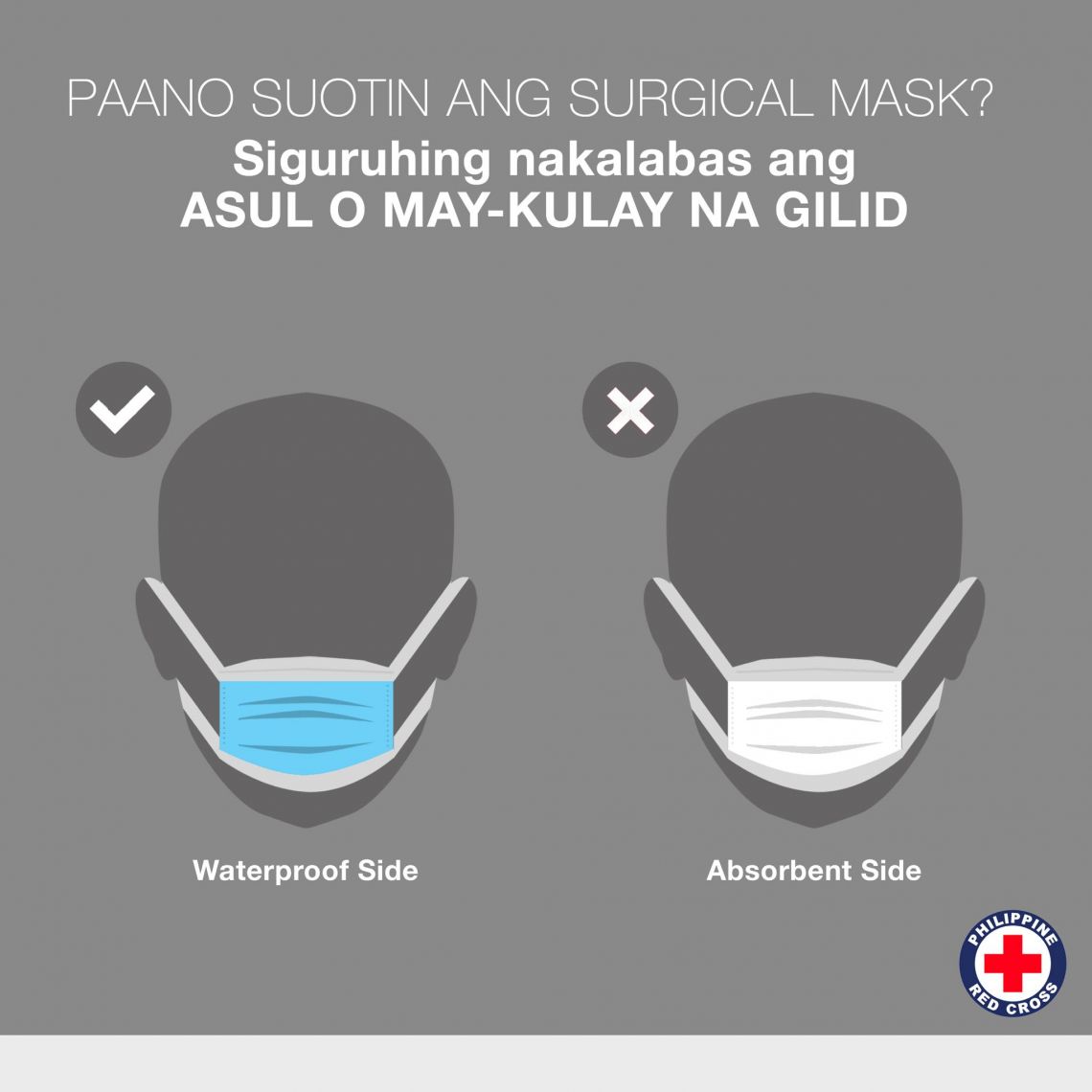
Photo from the PRC Facebook page
San Francisco’s Department of Public Health, Disease Prevention and Control likewise published on its website:
“Determine which side of the mask is the front. The colored side of the mask is usually the front and should face away from you, while the white side touches your face.”
Source: Population Health Division, San Francisco Department of Public Health: Disease Prevention and Control, How to Put on and Remove a Face Mask
The Hong Kong government in its website also said the “colored side of the mask faces outwards, with the metallic strip uppermost.”
DOH Secretary Francisco Duque III in a Jan. 27 Manila Bulletin interview demonstrated the proper way of wearing a mask; with the blue, or the colored side, facing out.
Fact-checking organizations Africa Check, Agence France-Presse, and media outfit Straits Times have flagged similar claims on the uses of surgical masks.
Surgical masks are meant to prevent the spread of contaminants. However, the use of the mask “alone” is “insufficient to provide the adequate level of protection” and should therefore be combined with other “equally relevant measures,” such as proper hand hygiene, according to WHO Philippines guidelines released on Jan. 29.
Wearing a mask “incorrectly” may “hamper its effectiveness” in reducing the risk of transmission, it added.
Former Health secretary and now Iloilo 1st District Rep. Janet Garin in a Jan. 29 CNN interview said surgical masks would not necessarily prevent a person from being infected, but will help people to not get in contact with droplets and transfer them to the eyes, nose, and mouth, which are the usual entry points for viruses and germs.
WHO Philippine representative Rabindra Abeyasinghe in a Jan. 28 press briefing said, while those showing signs of respiratory infections are advised to wear masks, “normal people going about their normal work” need not do so.
Meanwhile, those visiting healthcare facilities with “high concentration of people with respiratory infections,” or other crowded places like wet markets, may also opt to wear face masks.
WHO declared a global emergency on Jan. 31 in consideration of other countries with “weaker health systems that are ill-prepared” to deal with the potential spread of the Novel Coronavirus (2019-nCoV), which emerged from Wuhan City, Hubei province in China.
On Jan. 30, the DOH confirmed the first 2019-nCoV case in the country, after a 38-year-old female Chinese patient under investigation tested positive for the virus. The patient arrived in the country from Wuhan via Hong Kong on Jan. 21. She reportedly visited Cebu and Dumaguete before flying to Manila, where she was admitted to a government hospital on Jan. 25 after experiencing a mild cough.
What can the public do to prevent the spread of 2019-nCoV?
In an infographic published on its official Facebook page, the DOH advised members of the public to, among others, regularly wash their hands, avoid contact with animals, and to cover their noses and mouths when coughing or sneezing.
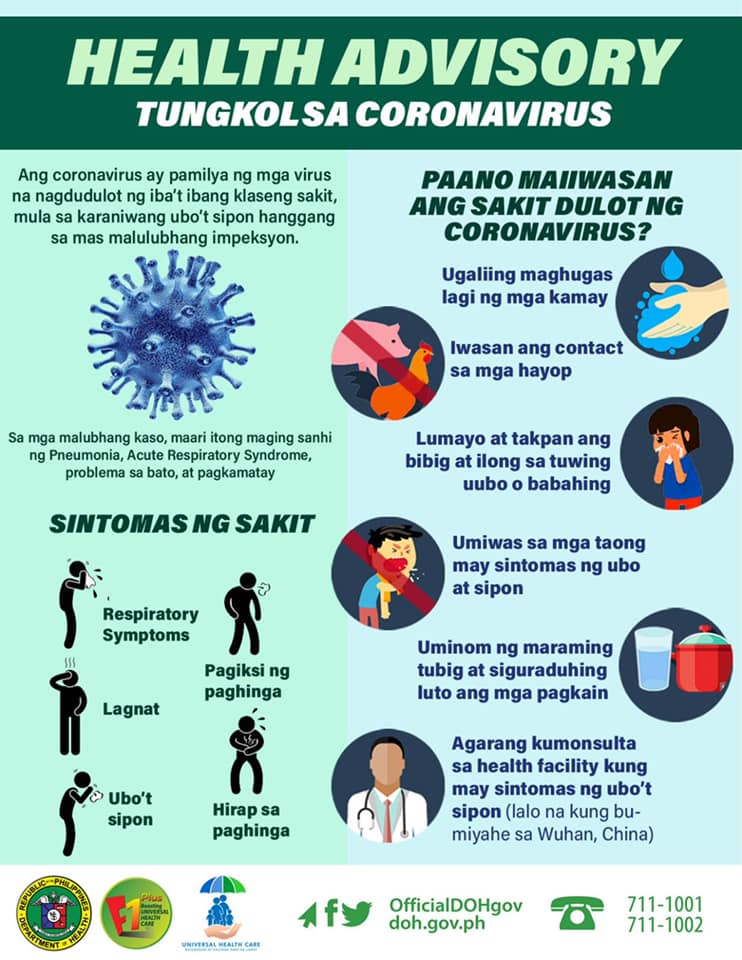
Photo from DOH official Facebook account
More information about the 2019-nCoV can be found on the DOH website.
What are the different types of masks?
